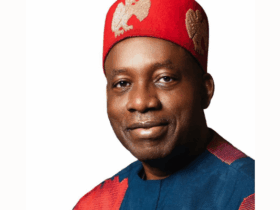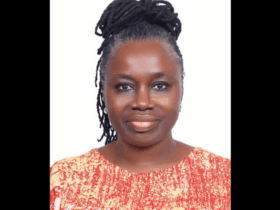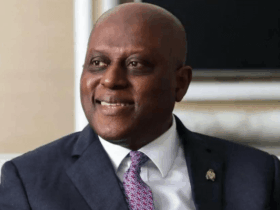Nigeria at 65: The health of a nation

When Nigeria gained independence in 1960, its founding fathers envisioned a nation that would stand tall, healthy, and prosperous.
The University College Hospital, Ibadan, stood as a beacon of modern medicine on the continent, attracting patients from West Africa and beyond.
Six and a half decades later, that dream has dimmed for many Nigerians.
Today, the health sector is at once a story of progress and paradox.
There are centres of excellence, revitalised primary health care facilities, and pioneering projects that have saved countless lives.
Yet, millions still die from preventable causes; families are pushed into poverty by medical bills, and doctors depart in droves for greener pastures abroad.
As Nigeria marks 65 years of independence, the question is clear: how is the health sector faring?
Experts say that Nigeria’s health system has evolved through alternating waves of reform and neglect.
In the 1970s and 80s, the Federal Government expanded teaching hospitals and established facilities across regions.
Following the Alma-Ata Declaration in 1978, the country embraced Primary Health Care (PHC) as the backbone of service delivery.
By 2001, African leaders, including Nigeria, signed the Abuja Declaration, pledging 15 per cent of national budgets to health.
Yet, more than two decades later, Nigeria still spends less than six per cent.
The National Health Insurance Scheme, inaugurated in 2005 and transformed into the National Health Insurance Authority (NHIA) in 2022, sought to improve financial access.
The Basic Health Care Provision Fund (BHCPF), introduced in 2014, provided a lifeline for PHCs.
In spite of these efforts, underfunding, poor governance, and a haemorrhaging workforce remain persistent challenges.
Muyi Aina, Executive Director and Chief Executive Officer of the National Primary Health Care Development Agency (NPHCDA), said 901 PHCs had been fully revitalised, while 2,700 more were undergoing upgrades, with a target to reach all 17,000 wards nationwide by 2030.
He noted that for communities where women previously delivered babies under torchlight, skilled attendance at birth and timely referrals had been instituted.
Dr Kelechi Ohiri, Director General, NHIA, said enrolment under the scheme had grown from 16.7 million to about 20 million Nigerians.
According to him, special funds such as the Vulnerable Group Fund and the Catastrophic Fund provide financial cover for cancer treatment, dialysis, and other costly care.
“In Lagos and Kaduna States, maternal deaths dropped by 58 per cent across 32 facilities under Project Aisha, a programme combining health worker training, midwifery kits, and free caesarean sections.
“Nationally, more than six million pregnant women have received essential micronutrient supplements,” he said.
Nigeria has rolled out the Measles-Rubella (MR) vaccine, expanded Human Papillomavirus (HPV) vaccination, and unveiled pilot programmes for the malaria vaccine; campaigns have averted outbreaks and improved coverage.
Training has also expanded, with enrolment into nursing programmes jumping from about 28,000 to more than 115,000 in just a few years.
More community health workers are being deployed to underserved areas.
In 2025, Nigeria allocated N2.48 trillion to health, just 5.18 per cent of the national budget.
This falls far below the 15 per cent Abuja Declaration target and remains inadequate to fund infrastructure, staff salaries, and essential medicines.
In spite of this, the country remains one of the most dangerous places to give birth.
According to UN estimates compiled from 2023 figures, no fewer than 82,000 women die annually from pregnancy-related causes, accounting for 19 per cent of global maternal deaths.
Life expectancy stands at around 55 years, well below the African average of 64 and far behind Ghana (64), Kenya (67), and South Africa (64).
The doctor-patient ratio in Nigeria is estimated at 1:5,000, compared to the WHO recommendation of 1:600.
Health spending per capita hovers around 55 dollars far short of the 86 dollars minimum recommended for delivering basic services.
Regional disparities remain stark; in northern Nigeria, women are more than twice as likely to die in childbirth as those in the South.
In rural communities, many facilities operate with a single nurse, compared to urban centres where specialist care is available.
Wealth also determines survival; families with insurance or savings can afford treatment, while millions of poor households must sell assets or borrow to pay hospital bills.
Simon Agwale, the Chief Executive Officer of Innovative Biotech, warned issued a warning.
“Equity must be put first.
“This means tailoring interventions to the needs of northern states, rural communities, conflict-affected areas, and marginalised groups who are often left behind in national health programmes,” Agwale said.
At a PHC in Kwali Area Council, Sarah Aso, a young mother of three, sits on a wooden bench clutching her malnourished toddler.
She narrated how she had walked four kilometres to the facility, only to find the nurse absent and essential drugs out of stock.
“For me, health care is still a gamble,” she said.
Meanwhile, at the Federal Medical Centre, Jabi, 32-year-old Ms Blessing Alaba undergoes chemotherapy for breast cancer.
Alaba explained that her treatment costs nearly a million naira, but under the new Catastrophic Fund, half her bills were subsidised.
“Without this support, I would have given up,” she said.
A young doctor at the same facility, who requested anonymity, said he was preparing to write exams for a licence abroad.
“Most of my colleagues have left; we are passionate about serving, but the pay and conditions cannot sustain us,” he said.
Nigeria’s underfunding of health persists despite repeated promises.
Critics ask why the Abuja 15 per cent pledge remains unmet, and why leakages in procurement and mismanagement of donor funds continue unchecked.
Civil society organisations argue that health financing must go beyond international donors.
Mercy Adeojo, founder of Women Strengthening Women (WSW), was frank.
“Nigeria must commit domestic resources and address inequities head-on; donor-driven health gains are not sustainable,” he said.
Muhammad Pate, Coordinating Minister of Health and Social Welfare, maintained that reforms were on course.
“We are working to revitalise PHCs, expand insurance, and strengthen governance; the road is long, but we are determined,” Pate said.
Dr Solomon Chollom, a virologist and public health expert, insisted that deliberate reforms must follow.
Chollom urged the government to move closer to the Abuja 15 per cent target, strengthen PHCs, and retain health workers by offering rural incentives and better working conditions.
Maimuna Abdullahi, a Health Economist with the African Health Budget Network (AHBN), provided further insights.
“Expanding insurance so that coverage becomes truly universal, especially for the poor and vulnerable, is non-negotiable.
“At the same time, prevention must be prioritised, clean water, sanitation, nutrition, and public health measures will save more lives than treatment alone,” she said.
Stakeholders also point to new opportunities: digital health innovations, telemedicine to bridge urban-rural gaps, and Nigeria’s participation in the African Medicines Agency to boost local manufacturing.
At 65, Nigeria stands at a crossroads; the health sector has seen pockets of progress revitalised PHCs, expanded insurance coverage, and measurable reductions in maternal deaths in some areas. Yet systemic weaknesses continue to claim lives and deepen inequalities.
The nation’s founding vision of “health for all” remains within reach, but only if bold reforms are sustained and matched with political will, adequate funding, and accountability.
“A healthy nation is a wealthy nation,” the saying goes.
For Nigeria, observers say the next decade will determine whether its health sector can finally deliver independence, a system that truly cares for its people
Abujah Racheal writes from the News Agency of Nigeria









Leave a Reply